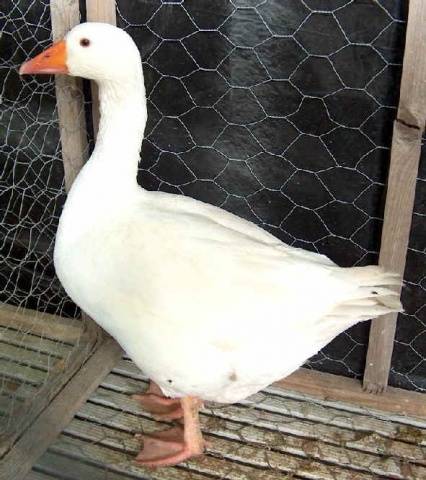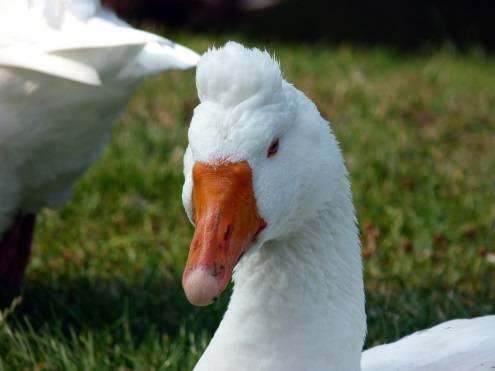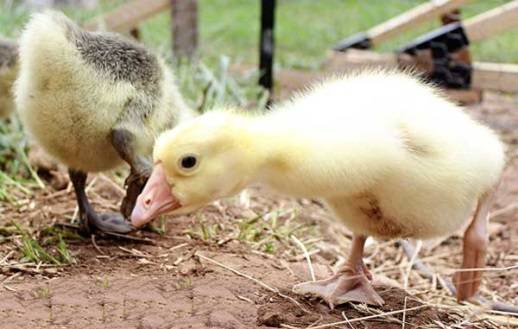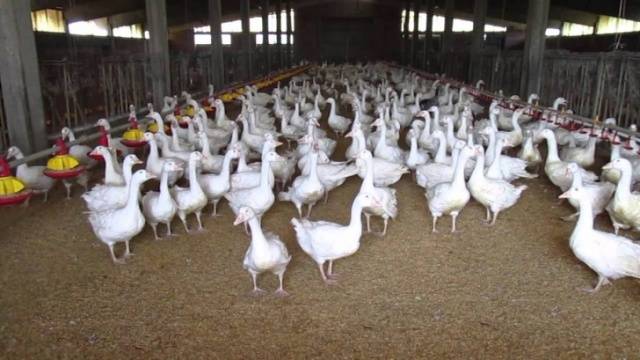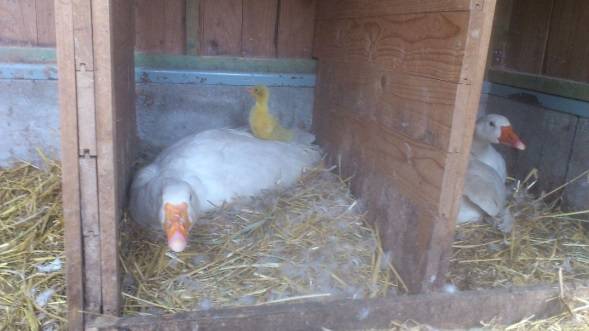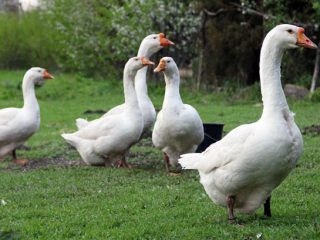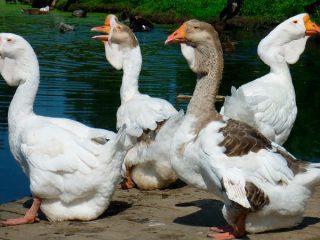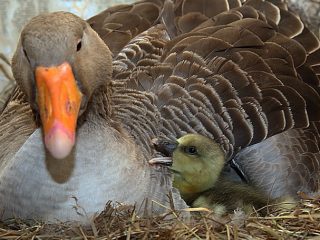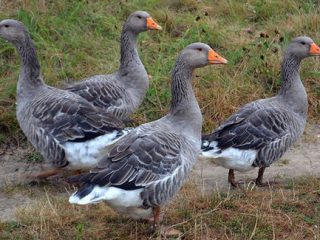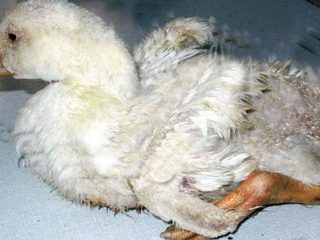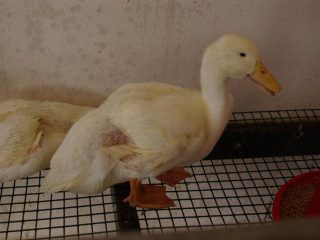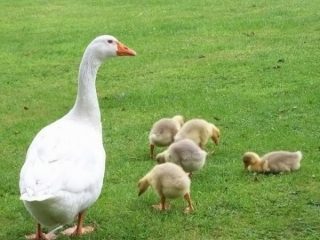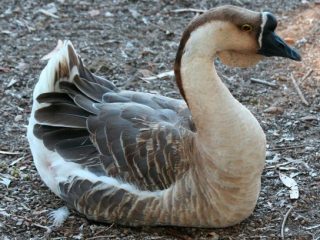Content
Italian geese are a relatively new breed of which there are two versions. According to one of them, the birds with the highest productivity were selected from the local population. According to the second, the local livestock was crossed with Chinese geese. It was first presented at an exhibition in Barcelona in 1924.
It appeared on the territory of Russia during the years of the existence of the USSR. It was brought from Czechoslovakia in 1975.
Description
Geese of the Italian breed belong to the meat sector and are mainly intended for obtaining delicious liver. It is a tightly knit bird with a compact body. In the description of the white breed of Italian geese, it is specifically indicated that they should not have folds of fat on the belly.
This is due to the fact that geese accumulate fat not in meat or under the skin, but on the belly. Generally, goose meat is drier than duck because of the lack of fat reserves under the skin. Italian white geese need to store internal fat. Otherwise, it is impossible to get a high-quality liver.
The average live weight of a gander is 7 kg, a goose weighs an average of 5.5 kg. The head is small and wide. The back of the head is flat, the chewing muscles are well developed. The orange beak is short and thin, there is no bump on the bridge of the nose. The eyes are large and blue. The eyelids are orange, the color of the beak.
The neck is short, straight, thick. There is a slight bend at the top. The long body is slightly raised in front. The back is wide, sloping towards the tail, slightly arched. The tail is well developed and horizontal.
The chest is broad and well muscled. The belly is well developed and deep. There are no skin folds between the paws. The wings are long, close to the body. The shoulders are set high and well developed.
At the same time, they can sell real thoroughbred Italian, they just put a photo of not their birds, but they took it from the Internet.
Legs are of medium length, strong, straight. Metatarsus are red-orange in color. The plumage is hard. The amount of down is very small. The color is white. Gray feathers are indicative of an admixture of another breed, but in small quantities are acceptable, although not desirable.
The egg production of geese of the Italian breed is very high. They lay 60-80 eggs a year. Egg weight 150 g. The shell is white. The hatchability of goslings is up to 70%.
Usually, even in the presence of a reservoir, due to the size of the birds, the fertility of goose eggs is about 60%.
Productivity
The productive characteristics of Italian geese are more related to the liver for which they are raised. Liver weight 350-400 g. Although these geese also have a good taste of meat. Goslings reach a weight of 3-4 kg by 2 months.
How to distinguish goslings
Due to the gene for dilution of color, linked to the floor, in future geese on the back, down is yellow or light gray, in geese, the backs are mostly gray. When breeding goslings by sex, the color of the back acts as a marking. The accuracy of sex determination on this basis is 98% when sorting 1140 heads per hour.
Content
Thanks to the stamp that Italy is a warm country, recognition about the thermophilicity of this bird is usually expected from the description of the Italian geese breed.But Italy, even on average, is not a very warm country and snow happens there regularly. In addition, it stretches from north to south, which is why it is much colder in its northern part. Italian geese, according to their owners, tolerate cold weather well. Moreover, during the time during which they are bred in Russia, the population managed to adapt and adapt to frost. Adult geese do not need a very warm shelter.
This is especially critical for Italian, who do not have a lot of fluff. Dirty, wet feathers lose their protective properties and birds can become overcooled.
It is very undesirable to keep the geese of the Italian breed as in the photo below.
Feathers that are soiled and soiled begin to let in cold air and water. A waterfowl does not overcool in water bodies only because the water does not reach their body. In case of contamination of feathers, waterfowl die in the water from the cold in the same way as land ones.
A photo of the keeping of Italian white geese on a western farm clearly demonstrates how it is possible to keep dry litter even with a large population.
Feeding
Initially, geese are meadow herbivorous birds. Usually, the description of Italian geese does not indicate their diet. Most often this is due to the fact that gourmet liver manufacturers do not want to reveal their secrets.
Therefore, if you need to fatten the Italian geese for the liver, grain feed is introduced into their diet. Often geese are fed with acorns, hazelnuts or walnuts.
If the herd is kept for the tribe, it should not be allowed to grow fat. Therefore, these geese are mainly fed with grass in summer. If there is a possibility of free grazing, they are allowed to graze. To train the geese to return home, they are fed once a day in the evening. But in this case, you will have to give them grain, since the geese will find the rest themselves on free grazing.
The winter diet must include hay as a substitute for grass. At the same time, cereals can be given so that the birds have energy for heating. You can give dry bread soaked in water.
Also in winter, finely chopped needles can be given to geese as a vitamin supplement. But in the spring the needles become poisonous.
In any of the seasons, geese, especially geese, should be provided with forage chalk and shells. There is no other place for these birds to get calcium for their eggshells. Unlike omnivorous ducks and chickens, geese do not consume animal protein, which means they will not eat snails.
Breeding
Italian geese have a weak brooding instinct. Therefore, when breeding Italians, 3 methods are used, depending on what is more convenient for the owner:
- incubation on an industrial scale;
- selection of a brood hen among Italian geese;
- laying eggs under geese of other breeds.
For breeding for a gander, 3-4 geese are selected. When breeding in incubators, eggs are selected of medium size, without defects in the shell. After 6 days, the eggs are illuminated with an ovoscope and the unfertilized ones are removed. It is recommended to turn the eggs every 4 hours. From the third day, before each turning, the eggs are sprayed with cold water. From the 6th day, the eggs are cooled by opening the incubator for 5 minutes. Goslings are usually hatched 28-31 days from the start of incubation.
With natural breeding, according to the reviews of the owners of the Italian breed geese, experienced geese should be selected for incubation. Young first years often neglect their responsibilities.
Breeding by placing under other geese does not differ from natural breeding. But the goslings will be led by a female of a different breed.
Goose nests are made taking into account their natural inclinations. Theoretically.In fact, the description of the nest for geese of the Italian breed contradicts the real photos of these nests.
With a "natural" device, the nest can be made of straw in the form of a circle with a diameter of 40 cm and a height of 10 cm. But geese with a well-developed incubation instinct build such a nest themselves if they have "building material". The disadvantage of such nests is that they can be built anywhere the female likes.
Generally, geese owners prefer orderly nests made of boards and straw-lined bottoms.
Such a nesting arrangement allows placing a greater number of birds on the same area, since the goose “thinks” that it is in a secluded place away from its relatives. It is not recommended to use sawdust as bedding due to its too high flowability.
Testimonials
Conclusion
With the declared large livestock of Italian geese in Russia, the description and photos of these birds often differ from each other. This may be due to the fact that today the percentage of Italian geese in Russia is small, or they are mixed with other breeds. Usually, crossing is carried out with the Gorky breed to improve the incubation instinct. As a result, due to cross-breeding in Russia today it is very difficult to find purebred Italian geese. The Italian breed is good for foie gras, but other breeds of geese are better for producing goose.
